Recently, I explored two cities in West Africa: Abidjan, regarded as the capital of the Ivory Coast and Grand Bassam, a UNESCO listed city. I was able to get an online Visa, which I collected on arrival at the International Airport in Abidjan.
I based myself at the Hotel Ibis Plateau in Abidjan and experienced the main sights of the city thanks to my excellent tour guide Dayo Williams and then took a side trip to Grand Bassam.
What To Do in Grand Bassam, Ivory Coast
Grand Bassam is a gorgeous seaside town with a beach which is also considered a UNESCO world heritage site. Grand Bassam is in south-eastern Ivory Coast, about 45 minutes drive east of Abidjan.
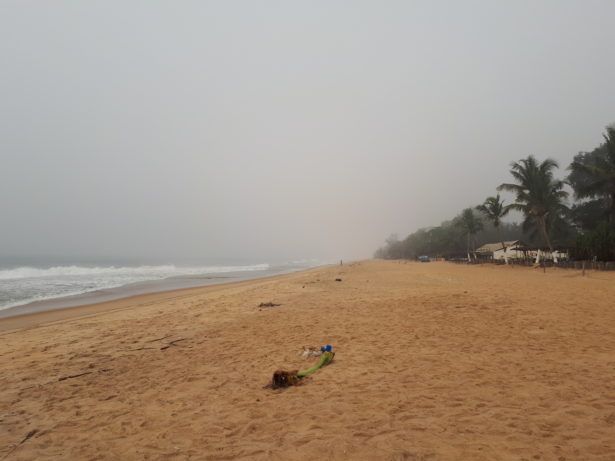
Grand Bassam Beach
This town was the French colonial capital city of the then Coast of Teeth or Vents (while Burkina Faso was once called Upper Volta) from 1893 to 1896. In 1896, when the administration was transferred to Bingerville after a bout of yellow fever. Bingerville also didn’t last as the capital, but famous football masters Wilfried Bony and Didier Drogba came from there. Grand Bassam remained a key seaport until the growth of Abidjan as the clear capital, from the 1930;s.
Here are the best things to check out when traveling to Grand Bassam in the Ivory Coast.
When in Africa I love to get a trip to the beach in. I managed to do this so far in South Africa, Western Sahara, Morocco, Senegal, The Gambia and Tunisia. Ivory Coast joined the list as I visited the sensational and calm beach here in Grand Bassam (see above)

Graffiti in the town of Grand Bassam near the beach
The waves crashed in, the sun was favourably unhot and we walked for a bit chatting. I did remember the sadness of the terrorist attacks here though. I passed the ill fated Etoile du Sud hotel where those horrific attacks happened.
Grand Bassam Museum
The main sight here is actually the Grand Bassam museum where it is standard to get a personal guided tour. My tour guide spoke in French which is where my lessons of Linda Macklin, Miss McCormick, Billy Cree and Katie Anderson came in handy. I could understand about 50% of it and my guide Dayo helped translate for any questions.
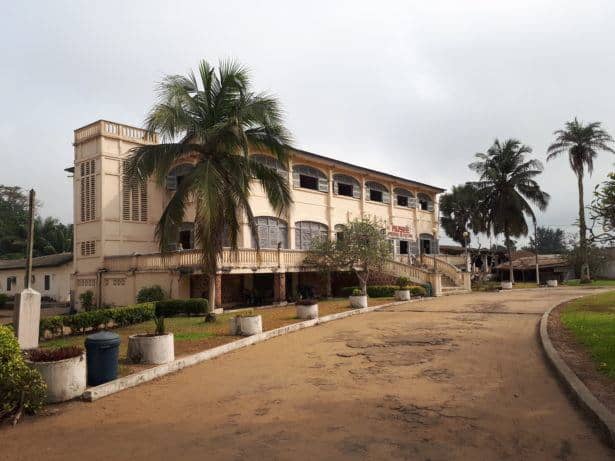
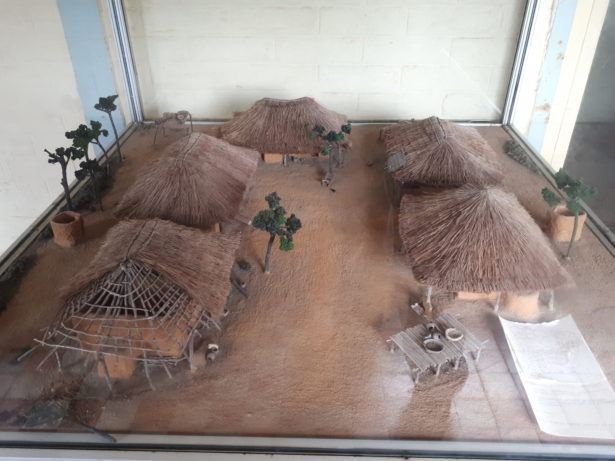
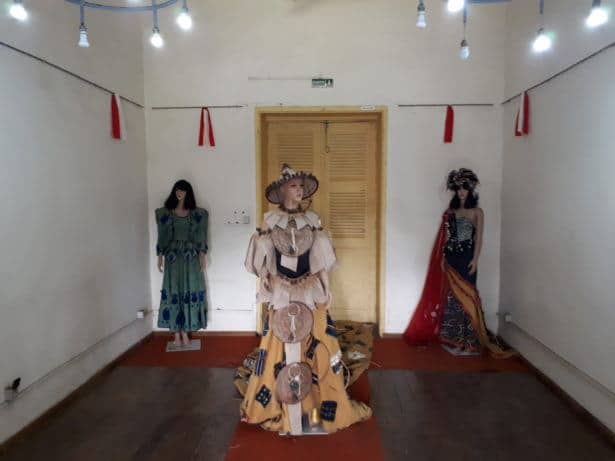
Shots of the Grand Bassam Museum
 There were two floors, an abundance of information to take in and a few displays. The main point of the museum is to illustrate the French colonial history and the tribal village life that existed in the area, and in the rest of Ivory Coast overall.
There were two floors, an abundance of information to take in and a few displays. The main point of the museum is to illustrate the French colonial history and the tribal village life that existed in the area, and in the rest of Ivory Coast overall.
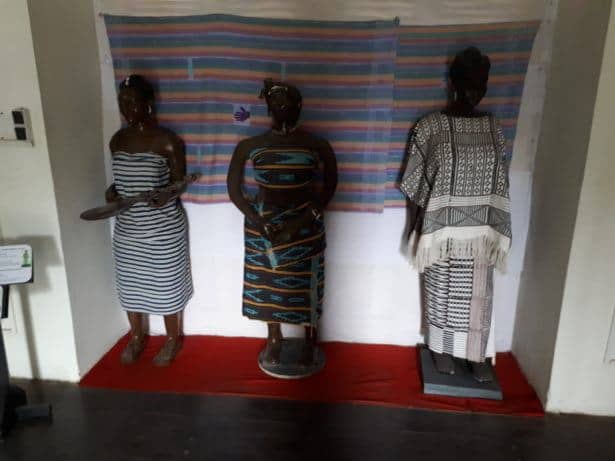
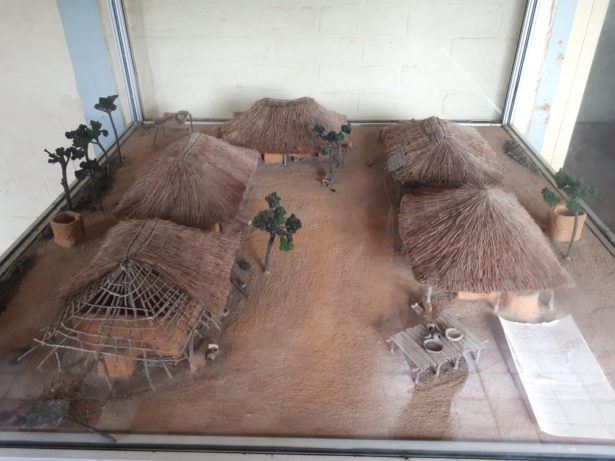
The building itself is a French colonial building and is well worth seeing. It’s worth noting that the very first toilet in the Ivory Coast is here. Yup, Grand Bassam still has the country’s first toilet. Today, it’s a luxurious green toilet within the museum building but it was officially the first proper toilet in the country.
Grand Bassam Library
Locals wait by the roadside before the library opens. That is how important and significant a building this is for locals. Apparently there is also Wi-Fi in this library, an important link for the town to the rest of the world.
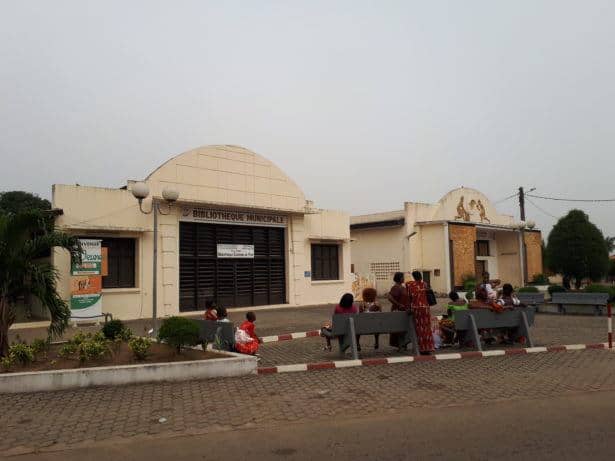
Locals wait for the Grand Bassam library to open
Colonial Buildings
When we walked down one of the main streets in this UNESCO town, it was full of French era Colonial buildings. It oddly reminded me of two places I had been before – Cayenne in French Guyana and St. Laurent du Marconi, also in French Guyana.
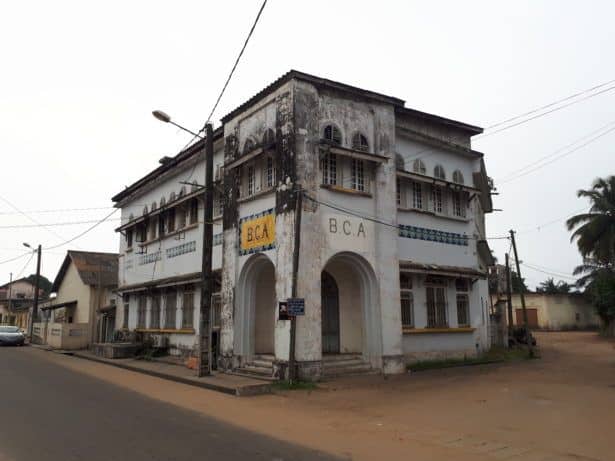
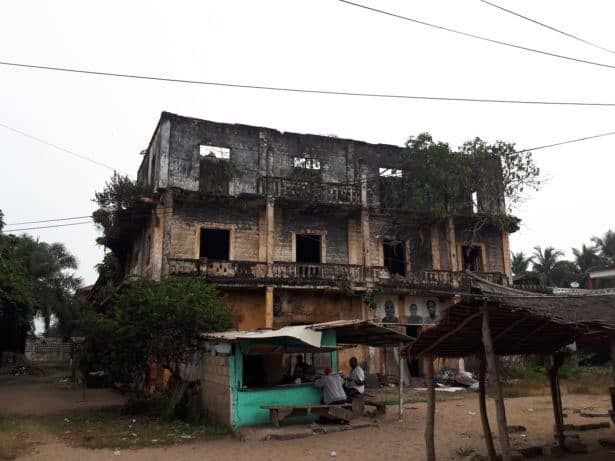
Delapitated Colonial Buildings in Grand Bassam
The Comoë River rolls its way through the town of Grand Bassam. Dayo and I went for a walk along it, inland where the town ends where you will also find a bridge to the neighbouring town.
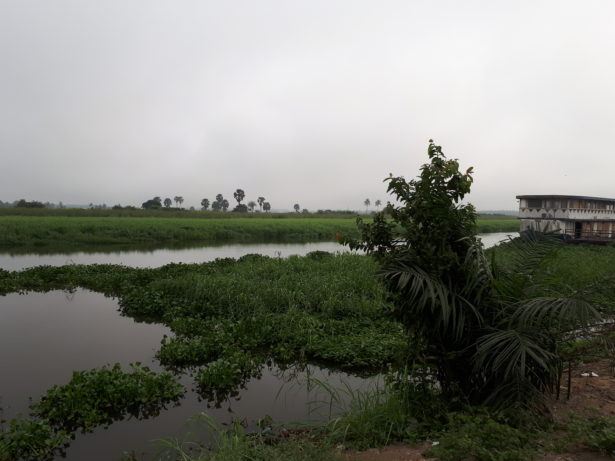
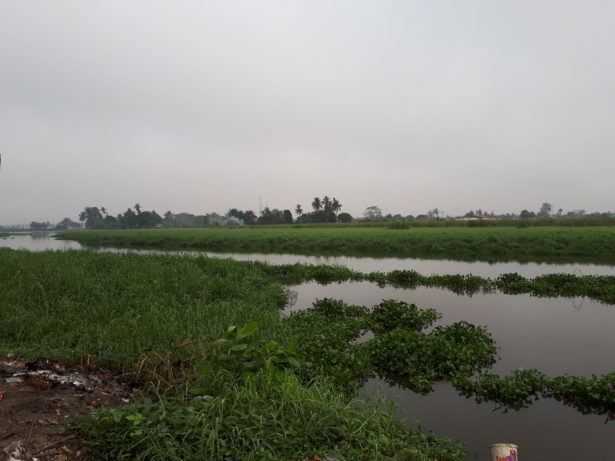
The Comoë River rolls through town.
There are also two islands here – Ile Bouet and Ile Morin, reachable by boat but we didn’t tour them. It’s also worth noting that most of the sights on this list are actually on the peninsula rather than central Grand Bassam, which sits inland across the bridge.
Yellow and brown and arguably the coolest building in Grand Bassam is the Palais Royal. It has closed brown doors and houses the current townmayor.
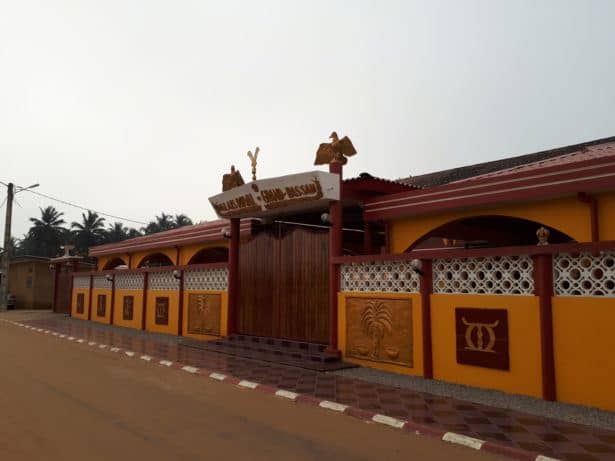
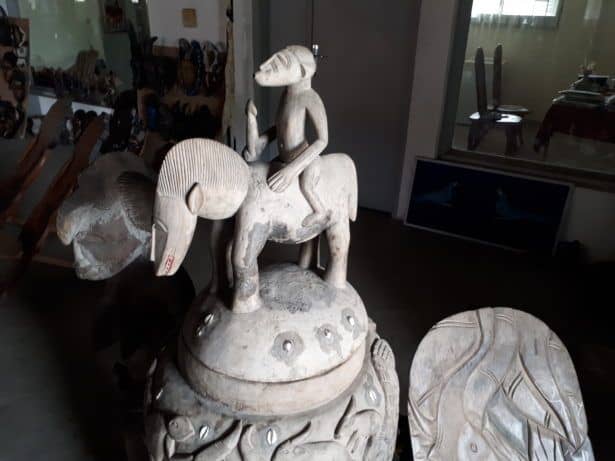
Outside and Inside The Palace Royal
It was built by the French invaders back in the day but has since been refurbished and maintained to a much higher level than many of the other UNESCO listed Colonial Buildings. The Palais Royal is located down by the beach, also on the main peninsula.
Pottery and Art Workshops
On our tour, we checked out two workshops – one for pottery and one for art. Hand crafted trade is still important in the Ivory Coast, although it seemed the days of selling nik naks from elephant tusks have passed the country by. I didn’t even see a single elephant when I was here, except on football shirts.
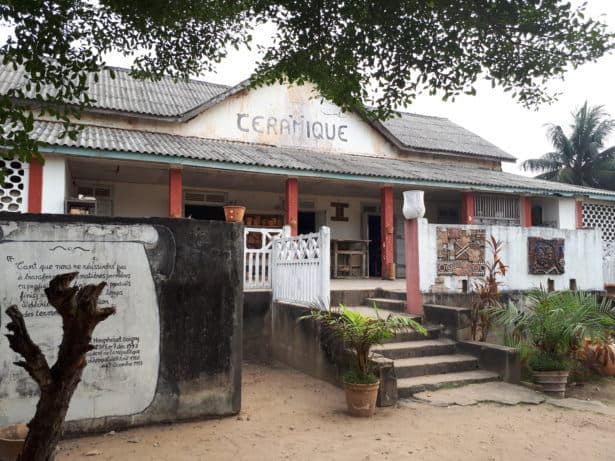
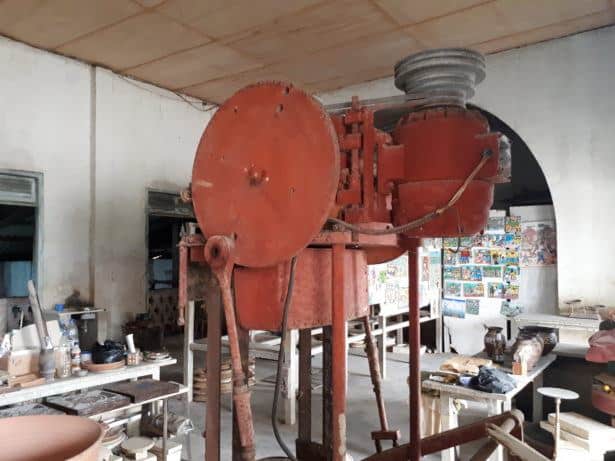
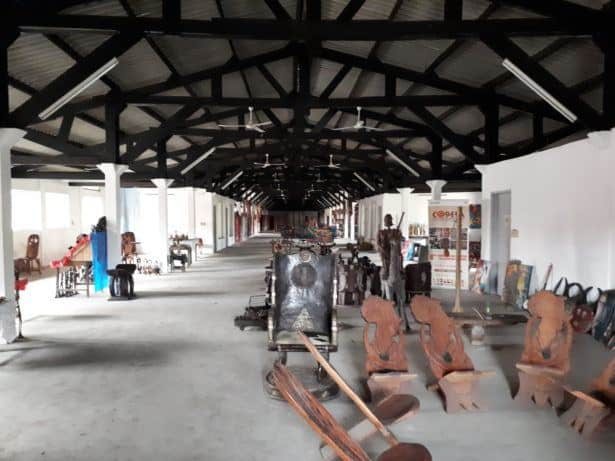
Culturally Fascinating
So much history here. Take a look at some of the culture, history and architecture as you meander through the town.
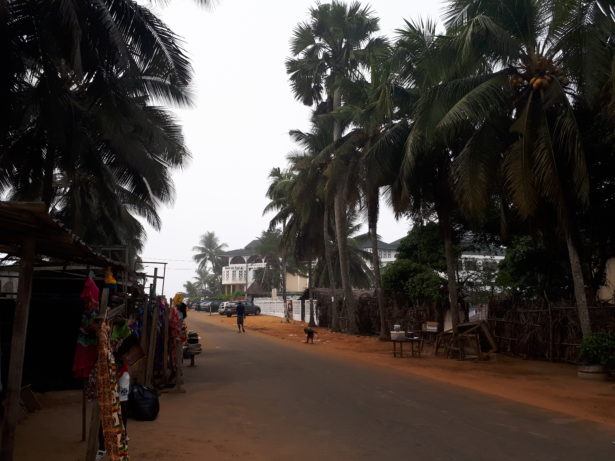
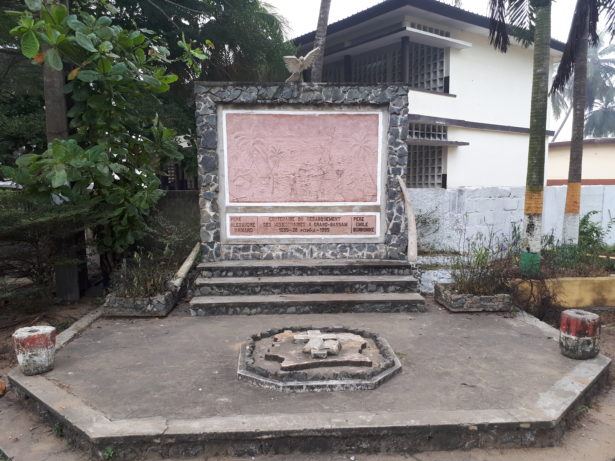
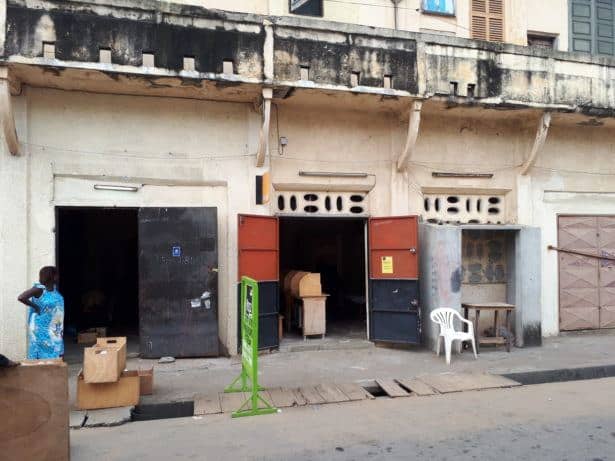
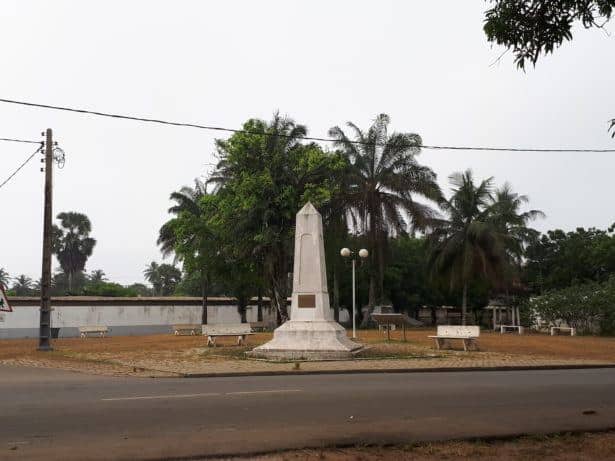
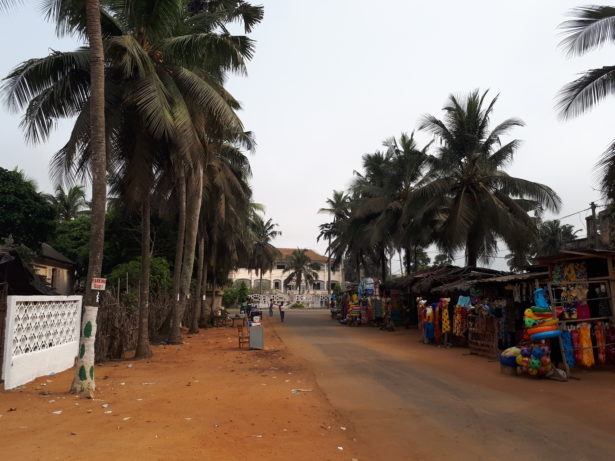
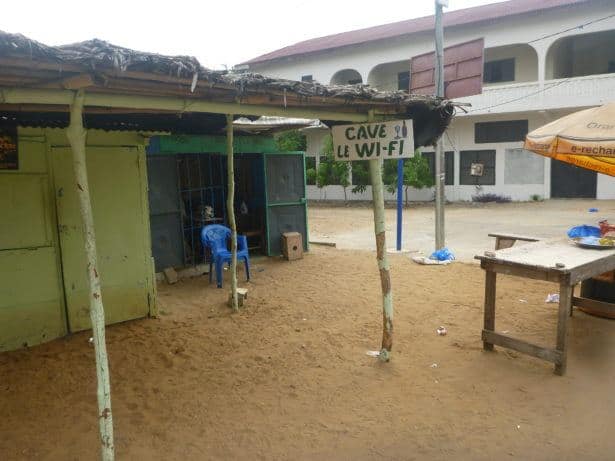

Jonny Blair is a self confessed traveling nomad who founded and blogs at Don’t Stop Living. He sees every day as an adventure. Since leaving behind his home town of Bangor in Northern Ireland ten years ago he has traveled to all seven continents, working his way through various jobs and funding it all with hard work and an appetite for travel. Don’t Stop Living, a lifestyle of travel’ contains over 1,000 stories and tips from his journeys round the globe. He wants to show others how easy it is to travel the world, give them some ideas and encourage them to do the same but most of all he aims to constantly live a lifestyle of travel. He is currently based in Hong Kong and on Twitter @jonnyblair.











